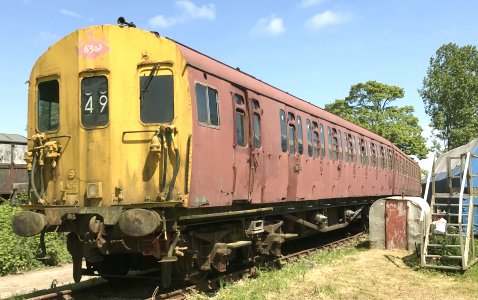 Established 1996
Established 1996
Suburban Electric Railway Association
Support Your Local Train
British Railways 2-EPB Unit - 6307
This unit comes from a batch of units built at Eastleigh in 1959 on the frames and bogies of much older wooden bodied 2-NOL units. The body profile and styling was identical to that used on the 4-EPB units 5001 onwards that were built in batches from 1951 to 1957 which themselves were based upon the 4-SUB production units, so despite being built well into the era of British Railways this unit has all of its ancestry with the Southern Railway. The unit is formed of a Driving Motor Brake Second and a Driving Trailer Second. Both vehicles had a full width driving cab, on the motor coach the brake van is behind this and then an open saloon with 3+2 seating. On the driving trailer there is a vestibule behind the cab for crew access and then two semi saloons with 3+2 seating, the partition between the saloon has no door and the whole of the coach can be accessed. This layout differs from when the units were built and the motor car was divided into two semi saloons with a solid partition between them whilst the driving trailer had a semi saloon behind the cab and five single full width compartments. The two vehicles gave a total seating capacity of 178 and were first used on Waterloo to Weybridge and Windsor services. They later migrated to suburban routes out of London Victoria on the Central section of the Southern Region. When new all units were painted all over green. The half and full yellow ends appeared in the 1960s and that gave way to all over rail blue with full yellow ends during the late 60s and early 70s. All the units that were face lifted received inter city type blue and grey livery and some that survived beyond 1990 were repainted into the red, white, blue and grey of the Network SouthEast sector.
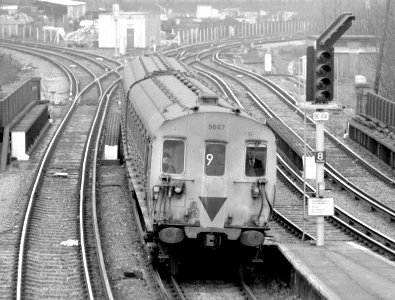
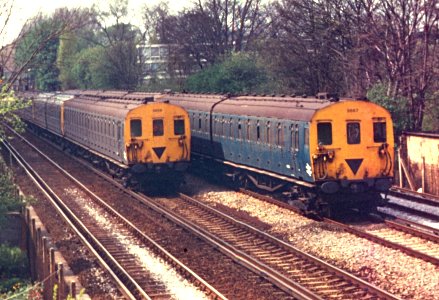
Starting in 1982 the Southern region selected a number of these two car units for face lifting. Those not selected had their motor coaches donated to make up new face lifted four car EPBs (using 4-SUB trailers) with the surplus driving trailers scrapped. The refurbished units were fitted with fluorescent strip lights, new ceilings and the compartment section of the driving trailer was opened out to make one long saloon as described above. The slight loss of seating was negated by more access and improved personal safety. Public address and new seating moquette were the finishing touches. The face lifted two and four car units were dedicated to suburban services on the central section from Victoria and London Bridge.
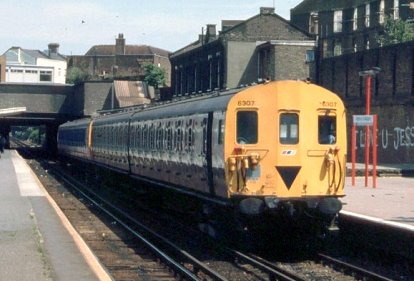
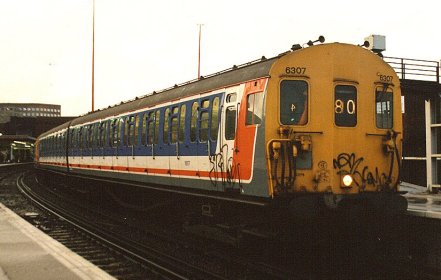
These units broke with tradition for SR EMUs when a batch of them were made available for work on the London Midland region services from spring 1985 between Broad Street and Richmond following the withdrawal of the class 501 fleet. When Broad Street closed the units took over the whole of the LMRs North London Line services between Richmond and North Woolwich which they did until replaced by 313 units in 1989. The units selected for these duties were fitted with window bars to prevent passengers leaning out due to tight clearances on this route. In time all of the fleet was so modified. Whilst used on the LMR the units remained allocated to the Southern with transfer of stock workings via platform three at Richmond. The window bars came in useful again when stock was needed for the East Grinstead electrification where clearances were also tight. VEP units needed to either have bars fitted or their droplight windows modified so they could not open fully. The 63xx EPB units saw use on East Grinstead services whilst the VEPs were being modified. When slam door suburban working ceased on the central section in 1991 the units were cascaded to the eastern section to replace un-refurbished units on services from Charing Cross and Cannon Street. they ended there days here when replaced by Networker EMUs a few years later.
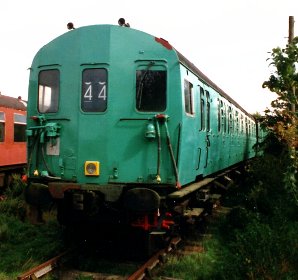
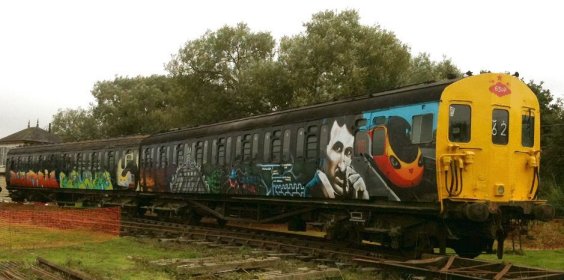
6307 was originally numbered 5667; the unit was renumbered when facelifted. After withdrawal from service in 1995 it was one of a small batch of old slam door EPB stock held back from scrapping and stored for possible sale to preservationists. It was bought by a private individual in 1996 who moved it to storage on Winkleigh Airfield in Devon where it was parked cab to cab on a short section of track. Both vehicles were painted in a malachite green. When the storage arrangement there ended he took up an offer to move to Coventry and store the unit there. A few years later the owner moved overseas and donated 6307 to the SERA, who donated it to the Electric Railway Museum. In 2010 the unit was used as a canvas by street artists Rumah and Crom who, with some fellow artists, painted a mural on one side depicting the story of electricity. When the ERM closed the unit was returned to the SERA and was moved to storage at Hope Farm, Sellindge, Kent. Restoration is a long term ambition but it is behind the locos and Tyneside EPB in the queue.
